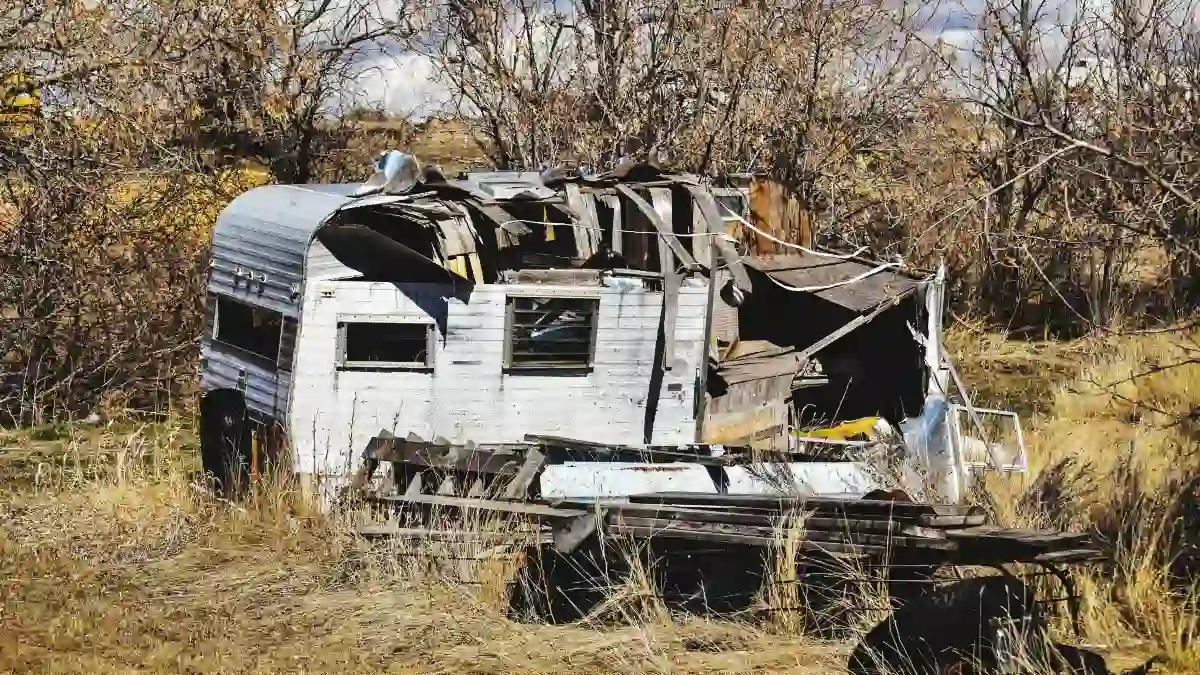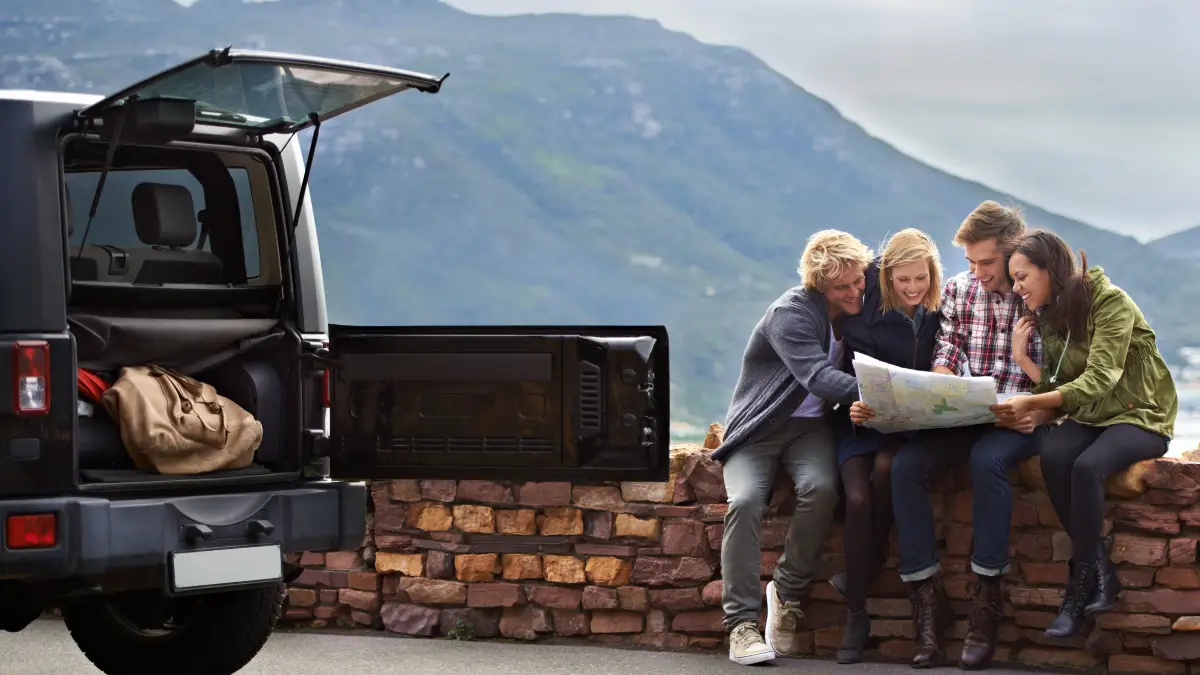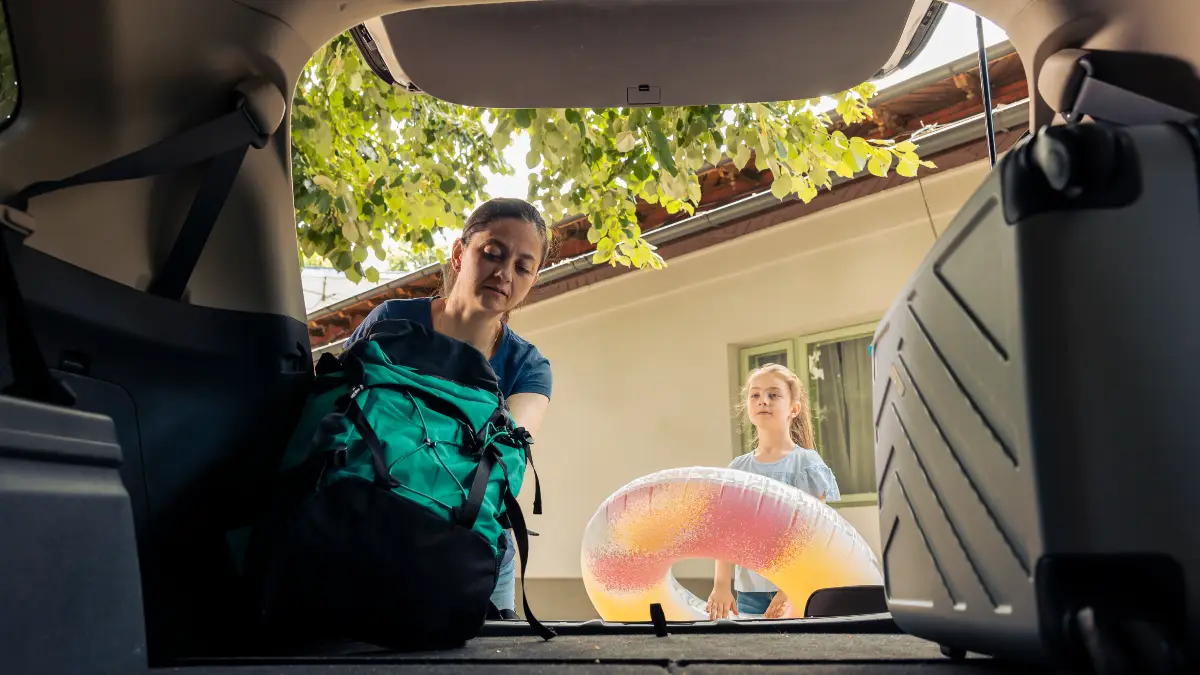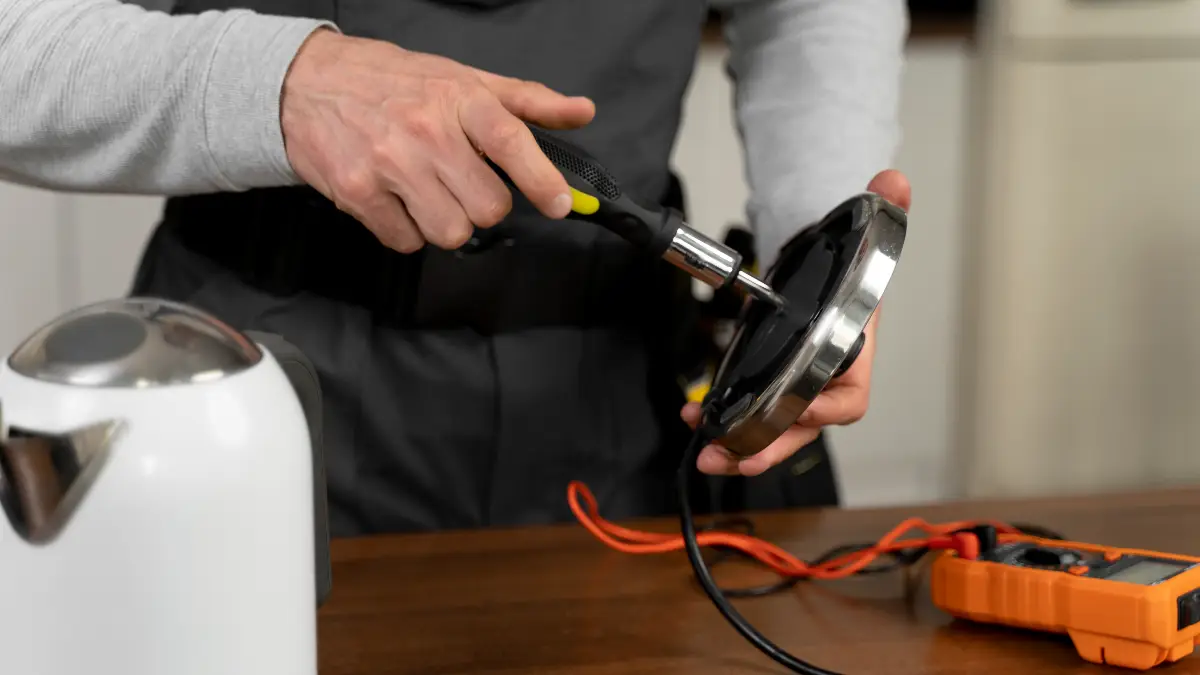Nobody tells you about the hidden costs lurking behind that RV dream. You’ve calculated payments, insurance, and campground fees.
But what about the $500 towing bill when you break down? Or the $3,000 transmission repair insurance won’t touch? These hidden expenses destroy more RV budgets than monthly payments ever will.
After watching countless owners get blindsided by unexpected costs, I’ve identified the seven fees that catch everyone off guard. Some hit immediately. Others wait years before striking. But they all share one thing—they’re completely avoidable if you know they’re coming. Here’s what nobody else will tell you.
1. Catastrophic Repair Costs That Insurance Won’t Cover

Your RV insurance covers accidents and theft. But what about when your transmission dies 500 miles from home? That’s when you discover the brutal truth about RV ownership costs.
The Real Numbers That Will Shock You
Here’s what actual RV owners are paying right now. A transmission rebuild costs $3,000 to $5,000. One forum member just posted their bill $4,200 for a Workhorse chassis transmission. And that was the “good deal” they found after calling six shops.
Slide-out motors fail without warning. When yours breaks, you’re looking at $800 for the motor alone. But here’s the kicker—that failure often damages the slide mechanism. Now you’re paying $3,000 or more for the complete repair. One owner’s slide-out nightmare cascaded into $3,400 worth of fixes.
Why RV Repairs Cost So Much More
Labor rates tell the story. RV shops charge $125 to $175 per hour. Compare that to your local mechanic at $90. Everything takes longer too. A simple AC replacement becomes an 8-hour job because technicians must remove roof components first.
Parts cost more because they’re specialty items. Your home AC unit might cost $3,000. The same capacity RV unit? Try $4,500. And you can’t just grab one at Home Depot.
The Death Spiral Nobody Talks About
Once your RV hits year seven, repairs accelerate. First it’s the water heater ($1,200). Then the refrigerator ($2,400). Soon you’re dumping $5,000 annually into a rig worth $25,000.
One documented case shows the harsh reality. A couple’s 2015 Class A suffered tree damage during a storm. Insurance called it “maintenance related” and denied the claim. The roof repair bill? $10,000. They had to sell at a massive loss.
Timeline Terror
Finding parts takes forever. Your average emergency repair means 2 to 6 weeks without your RV. AC failures average $2,400 and take three weeks minimum. Why? Shops stay booked solid during peak season.
The worst part about unexpected RV costs? They always happen at the worst time. Your transmission won’t fail in your driveway. It’ll fail on a mountain pass during vacation. Emergency RV repairs in remote areas cost even more—if you can find help at all.
These RV repair expenses aren’t rare exceptions. They’re the norm once your warranty expires.
2. Emergency Fund Drains You Can’t Predict

Think $5,000 covers RV emergencies? Double that number. Then add more. Because RV breakdowns trigger expense avalanches that destroy budgets fast.
The Hidden Hotel Trap
Your engine throws a rod. The shop needs four weeks for parts. Now you’re living in hotels at $125 per night minimum. That’s $3,500 for lodging alone. But wait—you also need restaurants for every meal. Add another $1,500. One mechanical failure just cost you $5,000 before fixing anything.
Real example: A couple’s diesel pusher needed transmission work in Utah. The three-week repair meant $3,800 in hotel costs. Their dogs meant pet-friendly rooms only, limiting options and raising prices. Total unexpected RV expenses including repair: $8,900.
Specialized Towing Nightmares
Your F-150 can’t tow a 40-foot Class A. You need commercial towing at $8 per mile after the first 10 miles. Break down 100 miles from the nearest qualified shop? That’s $800 just to get there.
Mountain breakdowns get worse. Specialized equipment for steep grades costs $500 to $2,000 per incident. One owner paid $1,600 for a 75-mile tow through Colorado passes. Regular insurance covered $200.
Natural Disaster Evacuations
Hurricanes and wildfires create expense bombs. Emergency campground rates during evacuations triple to $150+ per night. Gas stations jack up prices. And you’re competing with hundreds of other evacuees for everything.
A Florida couple fleeing Hurricane Ian spent $4,200 in five days. Emergency camping cost $750. Fuel for panic-driving inefficient routes totaled $800. Hotels when campgrounds filled: $1,900. Food and supplies during shortage pricing: $750. Insurance reimbursed zero.
The Rental Car Surprise
Your motorhome breaks down. Now you need wheels. Enterprise wants $400 per week for anything big enough for your family. Three-week repair? That’s $1,200 you didn’t budget for. Plus gas for a vehicle getting half your toad’s mileage.
The Minimum You Actually Need
Financial experts recommend three months of expenses for emergencies. RV owners need $10,000 minimum just for RV-specific disasters. Here’s the breakdown:
- Average towing incident: $500 to $2,000
- Hotel stays during repairs: $3,000 to $6,000
- Evacuation costs: $2,000 to $5,000
- Rental vehicles: $1,200 to $2,400
These RV emergency costs happen to careful owners too. Maintenance prevents some problems. But transmissions fail. Storms hit. Wildfires spread. Your RV budget planning must account for catastrophic scenarios, not just oil changes.
The truth about unexpected RV expenses? They’re not “if” situations. They’re “when” situations. And when they hit, they hit hard.
3. Internet Costs More Than Your Home Plan

Reliable internet isn’t optional when you’re working remotely or staying connected with family. But RV internet costs way more than residential service.
Most full-timers need multiple data plans. Your phone hotspot hits its limit fast. So you add a dedicated data device for another $80 monthly. Still not enough? Now you need a backup carrier for dead zones. That’s $200+ monthly just for data plans.
Equipment costs hurt too. A decent mobile router runs $300. Signal boosters start at $500. External antennas add another $200. Want truly reliable connectivity? Professional setups cost $1,500 or more upfront.
Campground WiFi won’t save you. It’s either password-protected and useless, or so slow you can’t load email. Public WiFi at coffee shops means driving there, buying something, and hoping for decent speeds.
Data limits crush streaming habits. “Unlimited” plans throttle after 50GB. Video calls for work eat through that in days. True unlimited costs $300+ monthly if you can even find it.
4. Registration and Legal Fees Keep Coming

RV registration costs shock first-timers. States base fees on weight, value, or class. Large motorhomes pay $400 to $800 annually in many states.
Towed vehicles need separate registration. That’s another $100 to $300 yearly depending on your car and state. Some states require annual inspections adding $50 to $100 more.
Domicile states matter financially. Texas, Florida, and South Dakota offer savings but require setup costs. Mail forwarding services run $150 to $300 yearly. Establishing residency costs time and money upfront.
License renewals get complicated without a permanent address. Some states require in-person renewals. Miss deadlines while traveling and face penalties plus rushed shipping fees for documents.
5. Insurance Gaps That Leave You Exposed

Your RV insurance policy has holes you won’t discover until disaster strikes. That $800 yearly premium you’re paying? It probably covers way less than you think.
Most standard policies exclude water damage from slow leaks. Your roof develops a tiny crack. Six months later, you discover rotted walls and mold everywhere. Insurance denies your $15,000 claim because it’s “gradual damage” not sudden loss. You’re stuck paying out of pocket.
Personal property coverage shocks people too. Your policy might cap belongings at $3,000 total. But you’ve got $2,000 in electronics alone. Add clothes, kitchen gear, and tools—you’re underinsured by thousands. When thieves break in or fire destroys everything, you’ll get pennies on the dollar.
The Full-Timer Coverage Trap
Using your RV full-time? Your standard policy might be void. Many insurers require special full-timer coverage that costs 20% to 50% more. Get caught claiming without it and watch your entire claim disappear.
Liability limits matter more in RVs. You’re driving a 30,000-pound missile. State minimums of $25,000 won’t cover a serious accident. One bad turn sending a car off the road could bankrupt you. Smart owners carry $500,000 minimum, adding $200 to $400 yearly.
Hidden Exclusions Nobody Mentions
Roadside assistance through insurance sounds great until you need it. Most policies limit towing to 50 miles. The nearest qualified shop is 120 miles away? You’re paying the difference at $7 per mile.
Vacation liability seems included but barely covers anything. Someone trips over your awning stakes and breaks their wrist. Your $10,000 vacation liability won’t touch their $50,000 medical bills and lost wages lawsuit.
Replacement cost versus actual cash value devastates older RV owners. Your 10-year-old RV might be worth $30,000 to you. Insurance sees depreciated value at $12,000. Total loss means you can’t buy anything comparable with the payout.
Storage coverage disappears when parked long-term. Leave your RV in storage for winter? Many policies suspend comprehensive coverage after 30 days. Rodent damage or break-ins during storage? Denied.
Emergency expense coverage caps at ridiculous amounts. Policy pays $500 for hotels if your RV is undriveable. But hotels cost $125 nightly and repairs take two weeks. You’re out $1,250 extra minimum.
The solution isn’t just buying more coverage—it’s understanding exactly what you have. Read every exclusion. Ask about full-timer additions. Compare actual numbers, not just monthly premiums. That cheap policy costs more when it fails you.
6. Storage Costs That Compound Every Month

Parking your RV at home sounds free until HOA fines start rolling in. Most neighborhoods ban RV parking after 48 hours. That forces you into paid storage whether you like it or not.
Outdoor lots seem cheap at $50 to $100 monthly. But your RV bakes in summer sun and freezes in winter. Seals crack, tires rot, and paint fades. That “affordable” storage leads to $3,000 in sun damage repairs after two years.
The Real Price of Protection
Covered storage runs $100 to $200 monthly but still leaves sides exposed. Rain blows in, rodents climb up, and thieves have easy access. You’re paying double for half the protection you actually need.
Indoor storage protects properly but costs $200 to $400 monthly. For a 35-foot Class A, you might pay $350. That’s $4,200 yearly to park something you own. After five years, you’ve spent $21,000 just on storage—enough to buy a decent used travel trailer.
Security varies wildly between facilities. Cheap lots have a fence and maybe one camera. Break-ins happen monthly. Better facilities with keypads, individual cameras, and on-site managers cost 30% more. But one prevented theft pays for years of higher fees.
Hidden Storage Expenses
Distance kills your budget slowly. That facility 45 minutes away saves $50 monthly. But you burn $20 in gas each roundtrip. Visit twice monthly for maintenance and you’ve lost your savings. Plus two hours of your time each visit.
Prep costs before storage add up. Winterizing runs $200 to $400. Adding fuel stabilizer, removing batteries, and covering tires costs another $100. Moisture absorbers and pest deterrents need replacing every few months at $50 per round.
Some facilities require insurance minimums you don’t have. Now you’re adding coverage just to park there. Others charge extra for slideout space, dump station use, or electricity for battery maintainers. That $75 monthly rate becomes $125 after add-ons.
The Deterioration You Can’t Stop
Even perfect storage can’t prevent degradation. Engines need running monthly or seals dry out. Tires develop flat spots without moving. Batteries die from sitting. Generators gum up from non-use.
You’re either visiting monthly for maintenance—costing time and gas—or paying mobile techs $100 per visit to start everything. Skip maintenance and face $2,000 in repairs when you finally retrieve your RV.
The math gets ugly fast. Storage, prep, maintenance visits, and deterioration repairs can hit $500 monthly for something you use four times yearly. Many owners discover they’re paying $6,000 annually to store a $40,000 RV they barely use. That’s when selling starts making sense.
7. Electrical Protection That Prevents Bankruptcy

One bad campground pedestal fries everything electrical in your RV. Your AC, microwave, converter, and TV die instantly. The repair bill? $8,000 minimum. All because you skipped buying proper electrical protection.
Surge protectors seem expensive at $300 to $500 for quality units. But they’re blocking disasters that insurance often denies. “Gradual electrical damage” gets excluded from most policies. That power surge cooking your appliances slowly over weeks? You’re paying out of pocket.
The Hidden Electrical Threats
Low voltage kills more RV systems than surges. Campgrounds running 102 volts instead of 120 slowly destroy your AC compressor. After three months, it dies completely. The $2,400 replacement could’ve been prevented by a $400 EMS device that monitors voltage drops.
Reverse polarity and open ground situations happen constantly at older parks. Your basic surge protector won’t catch these. You need an EMS (Electrical Management System) that checks all wiring conditions. Yes, it costs $450. But one reversed polarity incident destroys your converter at $1,200.
Cheap protectors fail silently. That $89 unit from Amazon might work twice before dying without warning. Now you think you’re protected but you’re completely exposed. Quality units like Progressive Industries include replacement warranties and failure indicators.
The Real Cost of Skipping Protection
Your RV’s electrical system wasn’t built for America’s aging campground infrastructure. Parks with 1960s wiring can’t handle modern 50-amp loads. During summer heat, voltage drops below 105 volts as everyone runs AC units. Your appliances strain, overheat, and fail prematurely.
Lightning strikes nearby pedestals send surges through entire campground systems. Even if you’re not directly hit, the surge travels through shared ground systems. One Florida RV park saw twelve rigs suffer damage from a single strike. Only the three with proper EMS units escaped damage.
Portable protectors get stolen, but hardwired units cost more to install. Either way, you’re spending $400 to $600 for real protection. That sounds steep until you’re facing thousands in repairs. One saved AC unit pays for the protector three times over.

